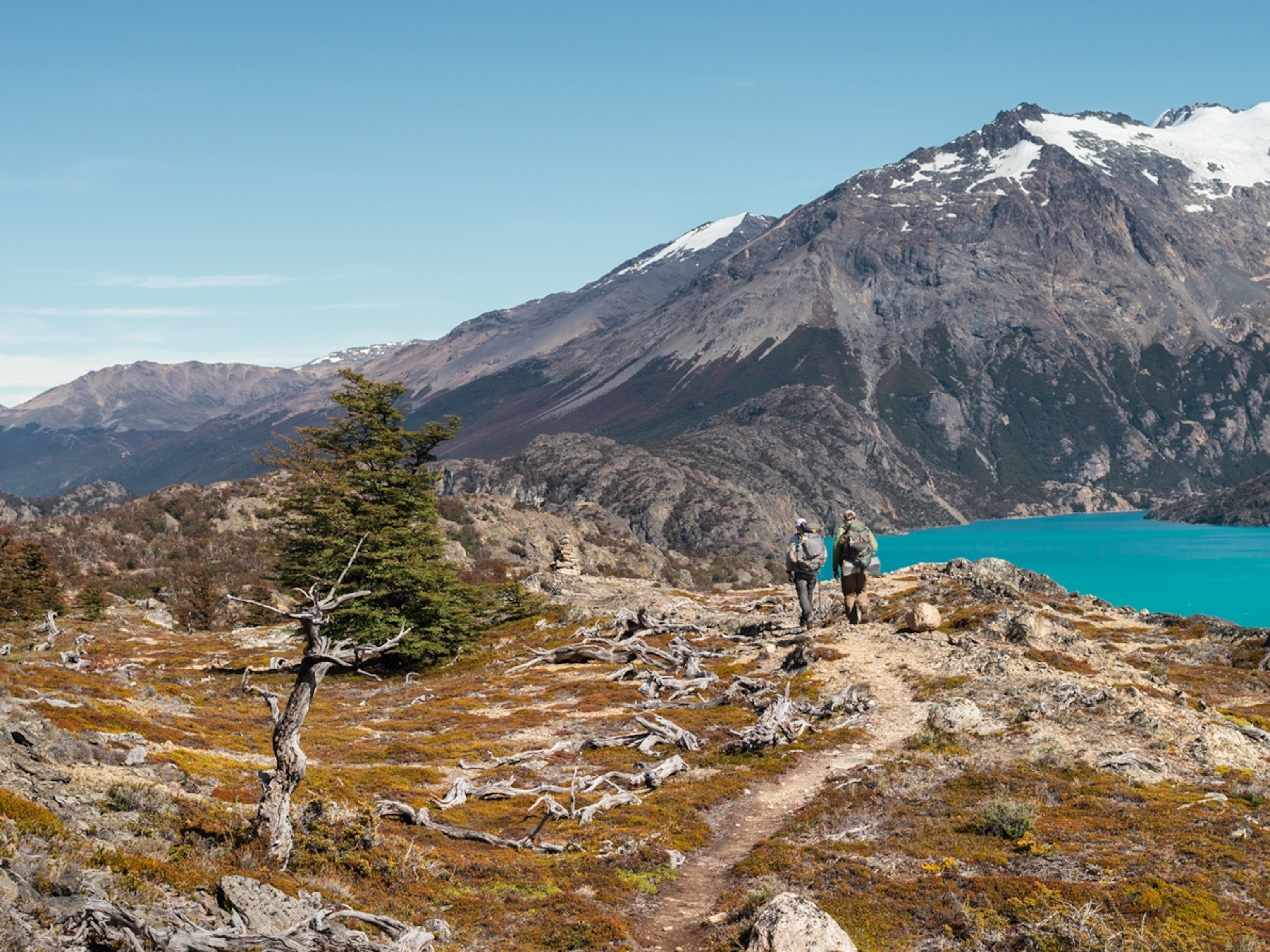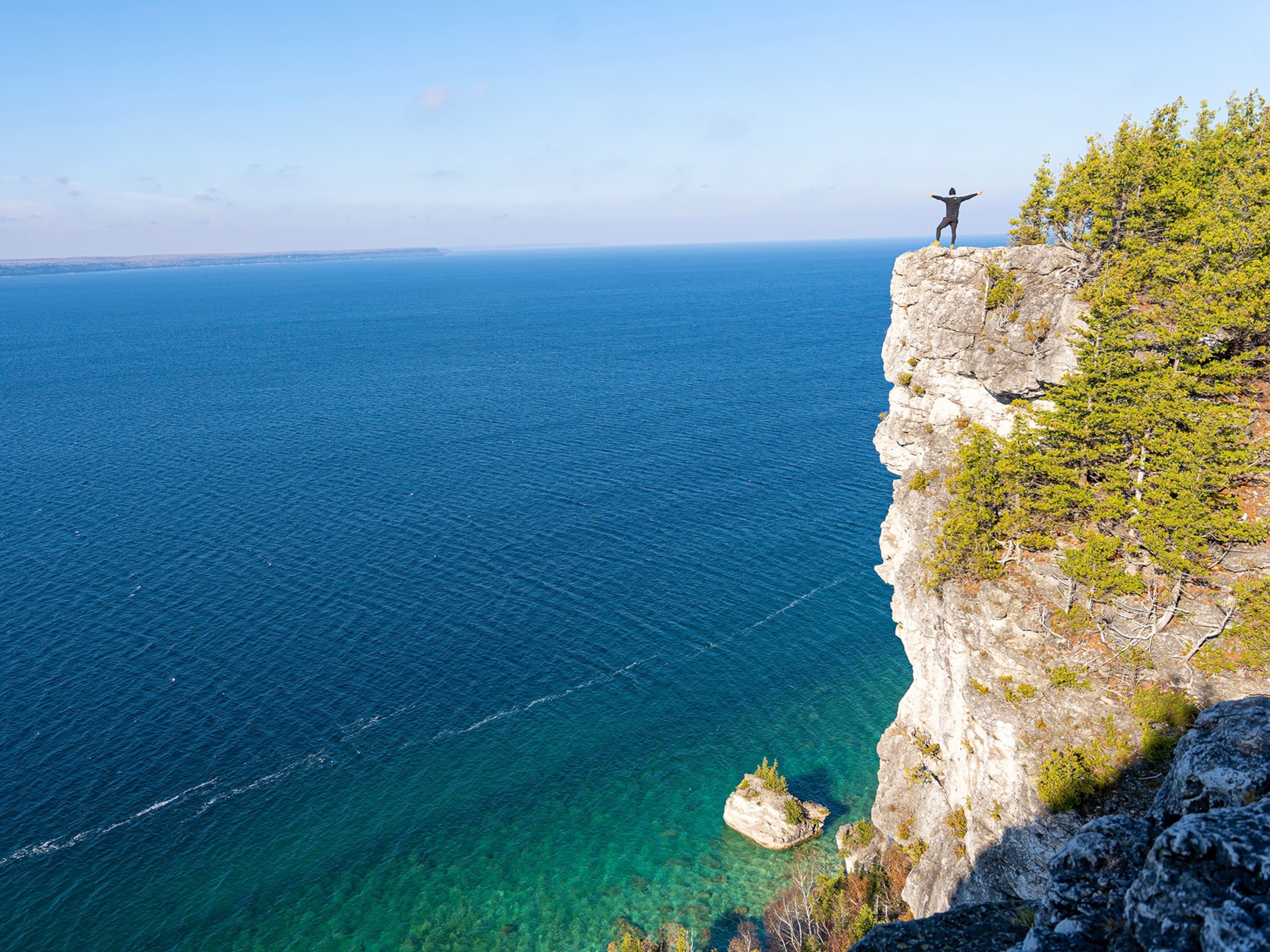
The Alps’ oldest hamlet has a history that surprises even the locals
In a Swiss region now known for the glitzy resort town of Zermatt, researchers are uncovering forgotten history along an important medieval trade route.
In 1865, Englishman Edward Whymper conquered one of Europe’s most iconic mountains in the Alps—the Matterhorn, with its distinctive snaggle-toothed peak rising nearly 15,000 feet above Zermatt, Switzerland, on the border with Italy. Although that watershed moment popularized mountain climbing across Europe, it represents just one chapter of the Swiss village’s past.
A new hiking trail called Kulturwege was designed to show a different side of the storied resort town. Over the next six years, the trail—a decade in the making—will stitch together roughly 12 miles of footpaths through six hamlets, highlighting centuries-old larch timber barns, once the lifeblood of Zermatt’s agrarian community, set amidst the bucolic alpine pastures.
“In Zermatt, you have millions of people coming a year. You just need to walk for 15 minutes [from the town center] and you can feel the way they lived 500 years ago,” ethnologist and trail cofounder Werner Bellwald says on a walk toward Zum See in the Valais canton, or region. It’s one of a clutch of largely uninhabited hamlets along two of the trail’s five segments currently open to hikers.
Indeed, hundreds of years before a tourism boom turned Zermatt into a world-class ski resort, it was a pastoral paradise studded with chocolate-hued barns for caching grain, air-drying meat, and keeping livestock. The barns were essential for helping locals survive the region’s unique steppe climate, which helped preserve them. But despite being a stop on a key Transalpine salt trade route, there are few written records documenting life here in the Late Middle Ages (roughly A.D. 1300-1500).
The trail’s founders are hoping to change that, by using science and generations of local knowledge to plug in the historical gaps.

A hike through history
The first signposted trail on the Kulturwege, unveiled in 2019, climbs nearly a thousand feet, a little over two miles, from Zermatt’s town center to Zmutt. Along the way, hikers encounter 14 “stations,” key points of interest with informational plaques. One such station highlights a centuries-old sheep barn, called a gädi in the local dialect, or livestock barn. Bunkered into a rocky overhang, the larch-timbered barn was built from medieval beams and windows reclaimed from several wohnhauses, or residential dwellings.
At the halfway point, hikers emerge from a copse to discover a pile of stones, the ancient remains of a cattle pen. Marking the end of the trail’s most hair-raising stretch (now secured with safety ropes) is a 250-year-old stone-hewn lynx trap, one of only two uncovered in the Zermatt area.
More a village amble than a mountain trail, the Kulturwege’s second segment, inaugurated last year, weaves in and out of Zmutt’s gädis, wohnhauses, and stadels (grain barns built on mushroom-shaped stilts) erected from 1300 to 1600. One gädi has been repurposed as an exhibition space dedicated to the backbone of Zermatt’s agrarian society: women. Curated by local Othmar Perren, the exhibit’s vintage photos depict women carrying everything from sheaves of rye (a staple Valaisian grain) to cow manure in woven wicker backpacks known as tschifras.
(See inspiring vintage photos of women working around the world.)
“They [Zermattens] lived from grain and cows until the 1950s,” says trail creator René Biner, who is also the president of the local historical society, Verein Alts-Zermatt, and a descendent of one of Zermatt’s founding families.
When it opens next summer, the third segment will take travelers through Zermatt’s beginnings, wending three miles downhill through four hamlets: Furi, Fleschen, Zum See, and Blatten. Collectively known as Aroleid, these hamlets joined Winklemattehn, Zmutt, and Im Hof (present-day Zermatt’s historic quarter) in relinquishing their independence. In 1791, they merged into a single community called Zer Matt, meaning “by or on the meadow” in the age-old local dialect.
Zermatt’s hamlets were almost entirely self-sufficient until the Visp-to-Zermatt railway was built in 1891. The opening of this route, and with it, tourism, led to the abandonment of many of these barns. Others had to be dismantled “like LEGO” to evade expanding glaciers, says Bellwald, as we inspect a gädi near Fleschen. The trail team believes it was upcycled from the remnants of a house in neighboring Im Boden that was swallowed up by the Gorner Glacier during Europe’s Little Ice Age, which lasted from the 14th to the 19th centuries.
The segment’s final stretch threads through a fragrant pine wood, ending at an early-20th-century teahouse, one of many that Claus Julen, a retired teacher-turned-amateur-historian, says was built for English tourists. Forerunners to Zermatt’s gourmet mountain restaurants, these women-run sagieras peddled souvenirs, refreshments, and alpine flower bouquets during the summer, Zermatt’s main tourist season until 1927.
(These six picturesque European villages tell hidden histories.)
Plugging in the gaps
Science has played a key role in shaping the Kulturwege. Biner had long surmised Zermatt’s hamlets were older than the dates inscribed on its barns and dwellings. But he needed hard evidence.
Cue tree detective Martin Schmidhalter. The dendrochronologist has spent two decades dating some of the Swiss Alps’ most isolated hamlets by establishing when their timber structures were constructed. “Normally trees were cut down in the winter and used to build houses the following summer,” he says.
Schmidhalter’s fieldwork for the Kulturwege began in earnest in 2012, when he set to work analyzing pencil-sized samples of timber from a handful of structures along what is now the Zermatt-Zmutt trail. After calculating the wood’s annual growth rings under a microscope, the data is run through a computer program that spits out reams of EKG-like charts that allow Schmidhalter to determine a tree’s birth and death.
(Here are all the ways that trees teach and inspire us.)
The research led to two remarkable discoveries. The first, in 2019, proved Europe’s oldest barn was hidden in plain sight on a panoramic plateau overlooking Zermatt town for more than seven centuries. The highlight of Kulturwege’s first trail, the Herbrig Stadel proves that the area was settled as far back as 1261.

Europe’s wider dendrochronology community has also corroborated Schmidhalter’s second claim, that Zmutt is the Alps’ oldest hamlet, a title that had belonged to Münster in the Goms Valley, also in the Valais.
With the third segment nearly completed and two more to go, the field is open for more discoveries along the Kulturewege. The potential to learn more about the area’s history keeps the trail’s founders pushing forward.
“We still don’t know all the answers,” Bellwald says. “But that’s when it gets interesting.”







